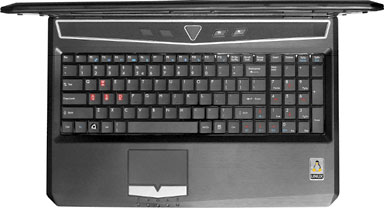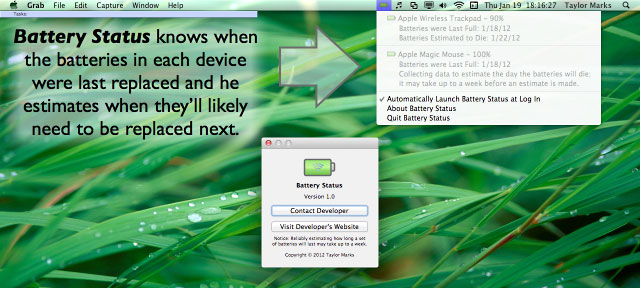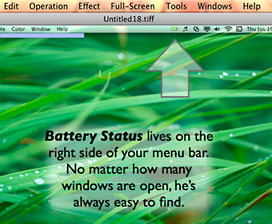General Apple and Mac desktop news is covered in Mac News Review. iPad, iPod, iPhone, and
Apple TV news is covered in iOS News
Review. All prices are in US dollars unless otherwise noted.
Rumor Roundup
Tech Trends
Software
Rumor Roundup
Thinner 15" MacBook Pro to Debut in
April?
How To Arena's Faheem Saeed says he's received another tip from a
reliable source in Far East Asian supply chain that Apple is planning
to release a thinner 15" MacBook Pro by the end of next month, to be
powered by Intel Ivy Bridge Core i5 and Core i7 processors.
Saeed's source maintains that this new MacBook Pro would be thicker
than currently available MacBook Airs but thinner than the current
MacBook Pros.
He further notes that according to recent reports, Intel is set to
announce its next-generation 22nm-based Ivy Bridge processors by the
end of April with 11 models including Core i7-3770K, Core i7-3770, Core
i7-3770S, Core i7-3770T and Core i5-3550, expected to appear in the
initial launch, while several models including Core i5-3470, Core
i5-3470S, Core i5-3475S, Core i5-3570 and Core i5-3570S delayed until
early June
Link: 15 Inch MacBook
Pro with Thinner Form Factor Powered by Intel's Ivy Bridge Processors
Coming in April
DigiTimes: Slimmer MacBook Pro in Production
DigiTimes' Aaron Lee and Jessie Shen, citing unnamed sources at
Apple's supply chain partners, report that the MacBook Pro has been
redesigned and given a slimmer form factor partly due to omitting the
internal optical drive. While there's been quite a bit of speculation
about a slimmed-down 15" MacBook in the works, little has been said
about a replacement for the strong-selling 13" MacBook Pro, but Lee and
Shen's sources say both 13" and 15" new MacBook Pro models are in
production for initial monthly shipments of 100,000-150,000 units.
Some have suggested that Apple might drop the 13" and 15" MacBook
Pros altogether and rationalize their laptop efforts to just the
MacBook Airs, along with an Ivy Bridge upgrade of the current 17"
MacBook Pro form factor for high-end users.
However, Lee and Shen say the new slimmer MacBook Pro models will
feature more advanced specs than the MacBook Air in terms of CPU
performance and storage capacity, with monthly shipments eventually
climb to 900,000 units.
Link: Slimmer MacBook
Pro in Production - DigiTimes (subscription required)
Tech Trends
Seagate Reaches 1 Terabit per Square Inch Milestone
in Hard Drive Storage
PR: Seagate has become the first hard drive maker to achieve
the milestone storage density of 1 terabit (1 trillion bits) per square
inch, producing a demonstration of technology that promises to double
the storage capacity of today's hard drives on its introduction later
this decade and allow production of 3.5" hard drives with an
extraordinary capacity of up to 60 terabytes over the 10 years that
follow. The company notes that the bits within a square inch of disk
space, at the new milestone, far outnumber stars in the Milky Way,
which astronomers put between 200 billion and 400 billion.
Seagate reached the landmark data density with heat-assisted
magnetic recording (HAMR), the next- generation recording technology.
The current hard drive technology, Perpendicular Magnetic Recording
(PMR), is used to record the spectrum of digitized data from music,
photos, and video stored on home desktop and laptop PCs to business
information housed in sprawling data centers on the spinning platters
inside every hard drive. PMR technology was introduced in 2006 to
replace longitudinal recording, a method in place since the advent of
hard drives for computer storage in 1956, and is expected to reach its
capacity limit near 1 terabit per square inch in the next few
years.
"The growth of social media, search engines, cloud computing, rich
media and other data-hungry applications continues to stoke demand for
ever greater storage capacity," comments Mark Re, senior vice president
of Heads and Media Research and Development at Seagate. "Hard disk
drive innovations like HAMR will be a key enabler of the development of
even more data-intense applications in the future, extending the ways
businesses and consumers worldwide use, manage and store digital
content."
Hard drive manufacturers increase areal density and capacity by
shrinking a platters data bits to pack more within each square inch of
disk space. They also tighten the data tracks, the concentric circles
on the disks surface that anchor the bits. The key to areal density
gains is to do both without disruptions to the bits magnetization, a
phenomenon that can garble data. Using HAMR technology, Seagate has
achieved a linear bit density of about 2 million bits per inch, once
thought impossible, resulting in a data density of just over 1 trillion
bits, or 1 terabit, per square inch 55 percent higher than today's
areal density ceiling of 620 gigabits per square inch.
The maximum capacity of today's 3.5" hard drives is 3 terabytes
(TB), at about 620 gigabits per square inch, while 2.5" drives top out
at 750 gigabytes (GB), or roughly 500 gigabits per square inch. The
first generation of HAMR drives, at just over 1 terabit per square
inch, will likely more than double these capacities to 6 TB for
3.5" drives and 2 TB for 2.5" models. The technology offers a
scale of capacity growth never before possible, with a theoretical
areal density limit ranging from 5 to 10 terabits per square inch 30 TB
to 60 TB for 3.5" drives and 10 TB to 20 TB for 2.5" drives.
The 1 terabit per square inch demonstration extends a line of
technology firsts for Seagate, including:
- 1980: ST-506, the first hard drive, at 5.25 inches, small enough to
be widely deployed in early microcomputers, the precursor of the modern
PC. The 5 megabyte drive cost $1,500.
- 1992: The first 7200 RPM hard drive, a Barracuda drive
- 1996: The first 10,000 RPM hard drive, a Cheetah drive
- 2000: The first 15,000 RPM drive, also a Cheetah hard drive
- 2006: Momentus 5400.3 drive, a 2.5" laptop drive and the worlds
first drive to feature perpendicular magnetic recording technology
- 2007: Momentus FDE (Full Disk Encryption) drive, the industry's
first self-encrypting hard drive
- 2010: Momentus XT drive, the first solid state hybrid hard drive,
combining traditional spinning media with NAND flash, to deliver speeds
rivaling solid state drives (SSDs)
Seagate achieved the 1 terabit per square inch breakthroughs in
materials science and near-field optics at its heads and media research
and development centers in Bloomington, Minnesota, and Fremont,
California.
High-End Verix 2.5 Laptop Comes Loaded with
Linux
 PR:
ZaReason's Verix 2.5 is full HD 1080p 15.6" Ubuntu Linux laptop with
Core i7 CPU and Nvidia GTX 580M dedicated graphics with 2 GB GDDR5
video RAM. The Hyper-threaded CPU provides up to 8 threads of
processing power to rival desktop processing power.
PR:
ZaReason's Verix 2.5 is full HD 1080p 15.6" Ubuntu Linux laptop with
Core i7 CPU and Nvidia GTX 580M dedicated graphics with 2 GB GDDR5
video RAM. The Hyper-threaded CPU provides up to 8 threads of
processing power to rival desktop processing power.
Features:
- Bright 15.6" LED backlit display @ 1920x1080 pixels
- Nvidia GTX 580M dedicated graphics with 2 GB GDDR5 video
ram
- Speakers on both sides of the keyboard and a subwoofer for quality
sound output
- 802.11 B/G/N WiFi included
- Bluetooth included
- Combo CD-RW and dual-layer DVD-RW drive included
- 3.0 megapixel webcam included
 Ports:
Ports:
- HDMI and VGA monitor ports
- Gigabit Ethernet port
- Headphone and mic jacks
- Kensington lock port
- 4 USB ports: 2 USB 3.0 and 2 USB 2.0
- eSATA port
Specs:
- Your choice of a variety of Open Source operating systems
- Multimedia keys for Rev/Stop/Play/FF
- Dedicated number pad
- Dimensions: 15.6" (w) x 10.5" (d) x 2.2" (h)
- Weight: 6.0 lb.
- Battery life: extended battery included provides up to 5 hours
Price: $1,799
Link: Verix 2.5
Intel Tantalizes Consumers with Ultrabook
Temptations
PR: What would you do for an Ultrabook computer? That's the
question Intel Corporation asks in Ultrabook Temptations, a series of
six lighthearted experiments filmed in four cities across three
countries and posted to YouTube today.
"People are drawn to Ultrabooks. When you see one, you just want
one," says Claudine Pache, digital marketing manager for Intel
Australia and New Zealand. "We created the Ultrabook Temptations to see
just how far people would go to get their hands on one."
The six experiments, filmed in Australia, Indonesia and Thailand,
set out to explore the depth of human emotions that surround these
objects of desire. The experiments were temptations for consumers,
encouraging them to go a little beyond their everyday comfort zone to
earn the chance to become the owner of an Ultrabook. The experiments
were filmed spontaneously in an effort to introduce Ultrabooks and are
available for viewing by an online audience.
In "Daring Temptation" for example, an Ultrabook is installed in a
display case near a busy area with the simple instruction to Smash
Glass to Win Ultrabook and a small hammer. Would commuters prove daring
enough to smash the glass in public and claim the prize?
According to Jayant Murty, Intel's Asia Pacific director of brand
strategy and integrated marketing, "Beauty is in the eye of the
beholder. Sometimes product stories are best told through the eyes of
our prospective consumers. We hope that seeing the videos will stir up
enough interest to go look for Ultrabooks at your nearest computer
store."
The first Ultrabooks - from brands* such as Acer, Asus, Dell, HP,
Lenovo, LG, Samsung and Toshiba - are in stores now. By the end of the
year, Intel expects more than 75 designs in market and that Ultrabooks
will become mainstream devices.
Link: Ultrabook
Temptations
Software
Battery Status Utility on Sale

PR: Taylor Marks' Battery Status utility is currently on sale
for $1.99 (33% off). This handy little app lives on the right side of
the menu bar and will tell you, for each supported wireless device
connected to your computer,
- What percent of the battery life is remaining.
- When the last time you replaced the battery was.
- When the battery is estimated to die.
 Marks says what prompted him to make Battery
Status was the magic Trackpad he got for his iMac last Christmas,
noting that it's a great little device, except for the fact it eats
batteries (and unlike the iPhone, you can't simply plug it in to the
wall to recharge it.) Furthermore, it offers no indication of what its
remaining battery life is.
Marks says what prompted him to make Battery
Status was the magic Trackpad he got for his iMac last Christmas,
noting that it's a great little device, except for the fact it eats
batteries (and unlike the iPhone, you can't simply plug it in to the
wall to recharge it.) Furthermore, it offers no indication of what its
remaining battery life is.
Battery Status supported wireless devices include Apple's wireless
mice, trackpads, and keyboards.
New in Version 1.1
 New Option to Reveal Percent Charge
Remaining in Menu Bar.
New Option to Reveal Percent Charge
Remaining in Menu Bar.- New Option to have the menu bar icon be displayed in black and
white instead of colored.
- New Option to choose a preferred reflected device. For example, set
the menu bar icon so that it'll always show the charge remaining in
your mouse, regardless of how low the charge remaining in your keyboard
drops.
- Mac OS X 10.6.8 is now supported.
- Now provides info on internal laptop batteries including charge %,
time remaining, number of cycles it has been through, and what percent
of the design capacity is still usable.
- Now quicker to notice new devices after you've connected them.
System requirements:
- Mac OS X 10.6.8 or later
- 64-bit processor
$1.99
Link:
Battery Status
Bargain 'Books
For deals on current and discontinued 'Books, see our 13" MacBook and MacBook Pro,
MacBook Air, 13" MacBook Pro, 15" MacBook Pro, 17" MacBook Pro, 12" PowerBook G4, 15" PowerBook G4, 17" PowerBook G4, titanium PowerBook G4,
iBook G4, PowerBook G3, and iBook G3 deals.
We also track iPad,
iPhone, iPod touch, iPod classic, iPod nano, and iPod shuffle deals.

 PR:
ZaReason's Verix 2.5 is full HD 1080p 15.6" Ubuntu Linux laptop with
Core i7 CPU and Nvidia GTX 580M dedicated graphics with 2 GB GDDR5
video RAM. The Hyper-threaded CPU provides up to 8 threads of
processing power to rival desktop processing power.
PR:
ZaReason's Verix 2.5 is full HD 1080p 15.6" Ubuntu Linux laptop with
Core i7 CPU and Nvidia GTX 580M dedicated graphics with 2 GB GDDR5
video RAM. The Hyper-threaded CPU provides up to 8 threads of
processing power to rival desktop processing power. Ports:
Ports:
 Marks says what prompted him to make Battery
Status was the magic Trackpad he got for his iMac last Christmas,
noting that it's a great little device, except for the fact it eats
batteries (and unlike the iPhone, you can't simply plug it in to the
wall to recharge it.) Furthermore, it offers no indication of what its
remaining battery life is.
Marks says what prompted him to make Battery
Status was the magic Trackpad he got for his iMac last Christmas,
noting that it's a great little device, except for the fact it eats
batteries (and unlike the iPhone, you can't simply plug it in to the
wall to recharge it.) Furthermore, it offers no indication of what its
remaining battery life is. New Option to Reveal Percent Charge
Remaining in Menu Bar.
New Option to Reveal Percent Charge
Remaining in Menu Bar.
